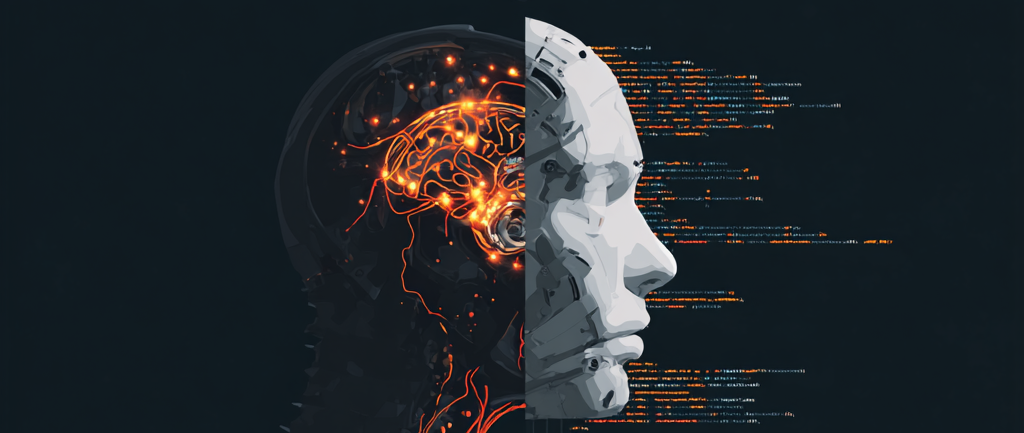Real stories of AI in software engineering
8:27
Real stories of AI in software engineering

Rethinking work in the age of AI
In 2025, Artificial Intelligence is no longer a buzzword reserved for tech conferences or science fiction. It’s in our inboxes, our spreadsheets, our code and our daily decisions. The tools are evolving rapidly, but the real transformation? That's happening quietly, right at people’s desks.
In this article, we explore how AI is truly being used in the workplace. Not in theory, but in practice. We spoke with developers, testers, analysts and innovators, both inside AE and beyond, to see how they're weaving AI into their day-to-day work.
From transcribing meetings to preventing tragedies, their stories show how curiosity has become skill and how tools like ChatGPT, Copilot and Whisper are reshaping how we work.
Whether you’re just starting to explore AI or you’re already building with it, you’ll find practical stories, useful insights, and maybe even a few surprises.
AI as a digital sidekick: tools that get used
Coding: Across the board, ChatGPT is still the go-to tool, whether people use the free or premium version. Some combine it with Copilot or Visual Studio, while others are experimenting with tools like Cursor, Perplexity, Gemini or Windsurf. From writing code and unit tests to drafting documentation or building AI generated. Today AI tools are becoming reliable digital sidekicks in everyday work.
“I use GitHub Copilot to help generate unit tests more efficiently. It's surprisingly helpful, although the code suggestions are less than ideal.”Andy Meyvaert, Technical Consultant at AE
Reporting: AI tools are making it much easier to create structured, accurate meeting reports. Instead of depending on incomplete Teams recordings, people now use transcription tools like Whisper, combined with language models such as ChatGPT, to produce clear, concise meeting minutes with less effort.
Meanwhile, Maryia, a QA expert, takes it a step further. Beyond well-known tools like ChatGPT, she’s working on AI-driven solutions with real-world impact—specifically in public transport for Stockholm Public Service. Her work shows how AI can help improve not just productivity, but also public safety and efficiency.
“We’ve developed an AI-based chatbot to assist with customer support. It helps analyse complaints and identify recurring issues, making it easier for customer service teams to address common pain points. Important is that security concerns are taken high on the agenda because personal data should be hidden and not available for everyone.”
But perhaps the most impactful AI implementation she discusses is a suicide prevention system in underground stations.
“The system analyses surveillance footage, detecting objects—or people—on the tracks. If there’s unusual behavior on the platform, such as someone lingering near the edge, it triggers an alert so personnel can intervene before it’s too late. It’s not just about identifying objects; it’s about understanding human behavior patterns.”Mariya Tuleika, Quality Engineering Leader
Real-world use cases: from QA to AI agents
Some of the most exciting AI applications we’re seeing today include:
-
Software Development
Developers are using AI to draft project plans, suggest test scenarios and even recommend lesser-known .NET packages. It’s a real creativity booster that helps spot blind spots early on. -
Testing & QA
AI is already analyzing logs, generating test cases, and writing exploratory test charters from specifications — saving days of manual work. Some experts shared that tasks now completed by AI in just 20 minutes used to take a full day. -
Public safety & Healthcare
Beyond the tech sphere, AI is being trained to monitor behavior on train platforms to prevent suicides. In healthcare, AI is processing vast amounts of medical data to support diagnosis and recommend the best treatment options. -
Education
AI is transforming both teaching and learning. For example, adaptive learning platforms like 360Learning can now tailor courses to individual employees. At ISTQB AI is being used to create auto-generated, (AI-reviewed) questions. -
Presentations & Content creation
Tools like Gama and Midjourney help professionals create striking visuals and structured slides. Dov, who comes from an artistic family, uses Midjourney over DALL·E for its cinematic edge. To put it in his own words: “It has more depth and let’s you achieve unique results, if you know how to use it”.
The AI balancing act: trust, security & hype
Despite the excitement, most professionals approach AI with caution.
There’s a shared understanding: AI doesn’t replace expertise—it amplifies it. AI-generated suggestions in coding still need thoughtful review, and in testing, they require a critical eye. It’s a powerful tool, but human judgement remains essential.
“We need to be aware of Vibe coding: Blindly adopting AI solutions without understanding what they do. This can be especially problematic for juniors. A critical mindset and consciously analysing both the context of a prompt and the resulting output is necessary.”Wouter Van Ranst, Principal Solution Architect at AE
Security is a key concern too. From avoiding personal AI accounts for company work to questioning who owns the generated data, professionals are becoming more discerning.
“We can’t blindly trust AI. Always keep a human in the loop.”Abbas Ahmad
Mindset over magic: training and strategy first
Several interviewees voiced the same frustration: AI isn’t being adopted well by many businesses. Simply giving people ChatGPT subscriptions won’t make them productive overnight.
What works?
-
Training on how to write effective prompts (e.g., using “expert personas”).
-
Clear policies for safe and smart AI use.
-
Strategic integration of AI tools into workflows, not just as add-ons.
“The key is to provide context, examples and constraints. That’s when AI really starts to deliver value.”Abbas Ahmad
Where do we go from here?
The road ahead won’t be defined by the tools themselves, but by how thoughtfully we choose to integrate and use them. AI is rapidly moving from passive assistants to proactive collaborators, this is where agentic AI comes in. These systems won’t just respond to prompts; they’ll make decisions, act autonomously and learn over time. That shift calls for more than technical skills—it requires a cultural mindset change.
“AI isn’t just an efficiency tool. It’s reshaping how organisations function at their core.”Jonathan Wright
The real challenge isn’t whether AI will replace humans—it’s how organisations learn to work with AI effectively. That means putting smart policies in place, providing hands-on training, and building a culture where critical thinking and ethical awareness are the norm. AI’s future isn’t set in stone—it’s ours to shape. One thing professionals agree on: the future belongs to those who can collaborate with AI, not just use it.
“AI is like hiring an assistant. It doesn’t mean you fire the team, it means you can finally focus on the good stuff.”Dov Zavadskis
Final thoughts: AI is here—make it work for you
AI is no longer a buzzword. It’s a tool, a teammate and sometimes even a disruptor. But it’s only as powerful as the person using it.
For some, AI is a way to write unit tests faster or to transcribe meetings with ease. For others, it’s powering safety systems in train stations or helping future software testers prepare smarter. Yet across all use cases, one theme repeats: AI adds the most value when paired with human intent, creativity and judgment.
Whether you’re a developer, tester, product owner or policy maker, the message is clear: AI isn’t magic, but it is powerful.
Use it with intention. Ask better questions. Which model fits this task?How do we guarantee quality? How do we stay secure? Don’t expect AI to be perfect; expect it to evolve, just like we do. Train it well. And above all, stay curious and critical.
Want to get started?
-
Checklist:
- Explore AI courses on online platforms or AE academy
- Experiment with personas in your preferred AI tool
- Try AI-assisted unit testing in Copilot
- Use Whisper + ChatGPT to turn meetings into minutes
- Use a tooling radar to identify the best tool for your needs
Just don’t expect it to replace you, expect it to challenge you.









